Chia or Flax Seed: Which is Better for Babies?
- Why chia and flax seeds have become so popular and how they can benefit babies with egg allergies
- Fiber and protein needs for your baby
- Why too much chia or flax can be dangerous for your baby
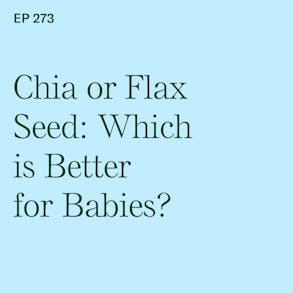
LISTEN TO THIS EPISODE
Episode Description
Can babies safely eat flaxseed? What about babies and chia seed? In this episode I’m weighing the pros and cons of flaxseed meal and chia seed when feeding babies, looking at cost considerations, nutrition profile, how you can use each and why they both work (decently) as an egg substitute when you’re making BLW fritters.
Flax or Chia as an Egg Substitute
- Combine 1 tablespoon of chia or flax with 3 tablespoons of water
- Mix to combine
- Let sit for 5-10 minutes until the mixture resembles an egg white texture. Makes the equivalent of 1 egg

Links from This Episode
- Baby-Led Weaning with Katie Ferraro program with the 100 First Foods™ Daily Meal Plan, join here: https://babyledweaning.co/program
- Baby-Led Weaning for Beginners free online workshop with 100 First Foods™ list to all attendees, register here: https://babyledweaning.co/baby-led-weaning-for-beginners
Other Episodes Related to this Topic
Episode 118 - Protein: How Much Protein Does My Baby Need?

Latest Episodes
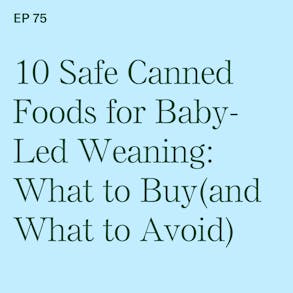
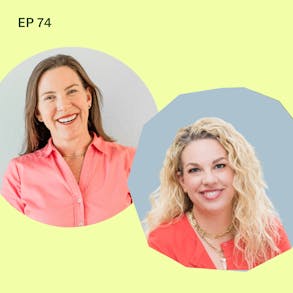
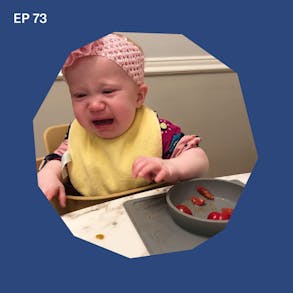
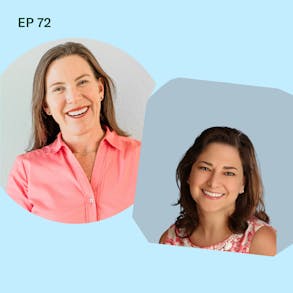
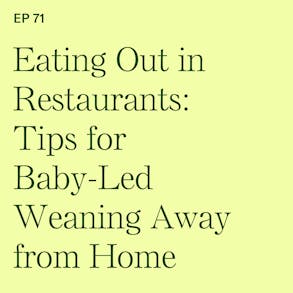
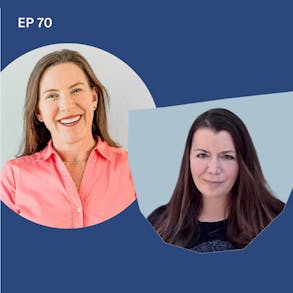
Katie Ferraro (0s):
And obviously concern about the chia is that a lot of adults are using this in diet culture as a weight loss tool, making chia seed pudding, which if you follow the standard chia seed pudding recipe, you're ending up with 16 grams of insoluble fiber, which I see people feed it to their babies and it's super dangerous. Hey there! I'm Katie Ferraro, registered dietitian, college nutrition professor and mom of seven specializing in baby led weaning here on the Baby-Led Weaning Made Easy podcast. I help you strip out all of the noise and nonsense about feeding, leaving you with the confidence and knowledge you need to give your baby a safe start to solid foods using baby led weaning. Chia seed or flax seed, which one is better for babies?
Katie Ferraro (45s):
Can babies even have chia seed or flax seed safely? What would be the benefit? What should we watch out for? We're gonna just do a real quick overview of both of these as they pertain to babies. I don't know if you guys have chia seed or flax seed in your cabinets. They're not on the 100 First Foods list. People sometimes email or comment. You know, why don't you have those on there? Like you have to stop somewhere. When it comes to a 100 foods on the a hundred first foods list, we have lots of other sources of carbohydrate and Omega three fatty acids and iron on there. But obviously your baby's gonna end up eating way more than a hundred foods down the road. And you might be wondering about chia seed or flax seed, which is why we're doing this today.
Katie Ferraro (1m 26s):
Now I like to start each of these mini baby-led weaning training episodes with a BLW tip of the day. And that is that if you do not eat egg, so if your baby is allergenic to egg or your family is vegan and you're not offering animal foods, you can use both chia seed and flax seed to make an egg substitute. So a lot of times I teach families how to make fritters for baby-led weaning to make some of those harder to feed whole grains or some, you know, leftover proteins you might have or cook vegetables can usually put 'em into a fritter, cut 'em into strips about the size of your adult pinky finger that babies can eat with their whole hands cuz they don't have their pincer grasp early on in baby-led weaning, right? But if you don't eat eggs, people are like, what holds everything together in the fritter?
Katie Ferraro (2m 8s):
Well, you can do a chia seed substitute or a flax seed substitute. I've done both of 'em for hundreds of different types of fritters. They never worked as well as egg, but they're a pretty good substitute if you can't or don't eat eggs. So here's how you do the chia seed or flax seed substitute, which to be honest, the only reason I have chia seed and flax seed in my pantry is for making BLW fritters cuz I always make an egg free version to show you guys that as well. So one tablespoon of chia seed or flax seed. Not both. Well, I guess you could do both. I should try that, a combo one. But if you're doing chia seed or flax seed, take one tablespoon of it and mix it with three tablespoons of water. You mix it together with a fork or a little whisk, let it sit for about five to 10 minutes until it gets a little bit gelatinized.
Katie Ferraro (2m 48s):
It actually becomes like the texture of an egg white. And then that equates to one egg. And you can use that in your fritter recipe. Used it in some baked goods recipes. It definitely does not work as well. But as I mentioned, flax seed or chia seed works great for an egg substitute. I also, if I run outta eggs, we eat eggs in my house, but if I run out and I'm making fritters for babies, then I'll use that as well. So let's look at the difference between chia seed and flax seed and kind of break it down. Before we get into it, I do wanna just say that these are not like staple foods that I'm using regularly for babies. I just wanted to do a nutrient kind of comparison and then share a little bit about them. A lot of times parents will have these foods on hand and ask, is it safe for babies to eat? And we need to talk about kinda the context in which they're used so well.
Katie Ferraro (3m 30s):
Flax seed to start out with, you can't just serve flax seed, it has to be ground in order for humans to digest it. So we don't do flax seeds. You don't eat flax seeds, it's the flax seed meal. So I have right here on my desk a bag of each chia seeds and flax seeds. I've got Bob's Red Mill flax seed meal. So it's like kind of like saw dust basically is the best way to describe it. And then a bag of Trader Joe's chia seeds. And the serving size for each of these is two tablespoons. So when we do the nutrient comparison will be comparing like for like one thing I do like about flax seed is they tend to be cheaper. Flax seed meal is definitely cheaper portion by portion than chia seed. Chia seeds are this, this cyclical trend, they always pop up every decade right from the days of the chia pet.
Katie Ferraro (4m 14s):
And then people use them for smoothies a couple while ago, and then now people are using it for chia seed pudding. So they kind of come and go with regards to popularity. But chia definitely on an upswing. So it's a trend of your food tends to be a little bit more expensive. As far as iron goes, both of these are relatively decent sources of iron. When I look at a nutrition fax panel, I'm usually looking for one milligram iron or more per serving. And then I call that an iron food for babies. And not all the foods we offer have one milligram of iron because of course fruits and vegetables and don't have iron. And those are important foods for babies to have. But we do wanna just pay attention to iron. And so in a relatively small amount volume wise of food, you, you can get a milligram of iron, which is great for babies.
Katie Ferraro (4m 54s):
Having said that, there's definitely some reasons why we're gonna wanna hold off on large portions of this, which will get to in a second. So both flax seeds and chia seeds have iron. Chia has almost doubled the amount of iron. So 1.7 milligrams of iron in a two tablespoon serving, but flax seed is still impressive. One milligram of iron in a two tablespoon serving. So they're both relatively decent sources of iron. And one of the reasons why both chia seed and flax seed kind of get elevated in the nutrition realm is because they are both considered the best sources of plant-based omega three fatty acid. So the alpha linolenic acid. So if you're familiar with Omega three fatty acids, the plant-based ones that ALA, okay, alpha linolennic acid is a plant-based essential omega three polyunsaturated fatty acid.
Katie Ferraro (5m 43s):
So it's one of the good fats, okay? And it's plant-based. Okay? There are other sources of omega threes, which we've talked about a lot on the podcast and the role that omega threes play in your baby's brain development. But you can get some omega threes, albeit from a different type from plant foods. Okay? And these, these are important because they have to be obtained by the diet, okay? Your body doesn't have the capacity to make adequate amounts of these essential fatty acids. When something's essential in nutrition, it means you have to get it from your diet. Your body can't make it. Now, is it essential that your baby eats flax seed and or chia seed? No, Absolutely not. By offering your baby a variety of foods, including a variety of plant foods, they'll naturally be accumulating these omega-3 fatty acids.
Katie Ferraro (6m 26s):
But as far as like a concentrated source goes, there's really no benefit or research that shows like, oh my gosh, babies need, you know, really high amounts of this. I wanted to just point out that youre babies is perfectly fine if you never ever serve them chia seed or flax seed. I'm more inclined to be using flax seed meal. And I'll explain why in a moment. A lot of it has to do with the cost, but I don't want you guys to feel pressured into buying this. I'm just kind of showing you the comparison because parents oftentimes will ask about it again. So the flax seed meal is the one you have to grind in order for the baby to digest it. So we serve the meal. Okay? Now, as far as precautions go, there are these flax, cogenic, glycosides. So basically these compounds that if you consume too many of them, they can bind with sulfur compounds, they can form thyocianates, which can lead to impaired thyroid function.
Katie Ferraro (7m 11s):
Okay? Now I don't want you to be worrying about this for your baby. I just want you to know though, as with most things, too much of a good thing is not a good thing. So we don't wanna go doing like mega doses of these foods to get a little bit of a nutrition benefit when there could be a potential drawback as far as, I guess. We can go back to the nutrition profile when we looked at the calories. So flax seed has 70 calories in a two tables when serving chia has one 20, who cares, right? Because we don't care about how many calories a baby is eating as far as fats go. Flax seed meal is four and a half grams compared to chia, which is eight. But again, my goal is not to fill my baby up with fats or to really stress about what types of fats they're eating, especially in the baby-led weaning phase when they're just learning how to eat real food.
Katie Ferraro (7m 53s):
If you look at the breakdown of omega three ala, yes chia, seed has slightly more, but again, your baby could be getting adequate amounts of the Omega three fatty acids from a variety of lots of other foods. There's no like, you know, widespread public health concern that babies aren't getting enough Omega three fatty acids. It's certainly not a nutrient of concern, meaning that we're not concerned about babies being deficient in it. However, if the baby was deficient in it because of inadequate nutrition, failure to thrive underlying health issues, certainly there could be cognitive impairment because of the role that omega three s play in lots of things, including brain health, blood health, bone health cetera. As far as fiber goes, a lot of adults love chia seed over flax seed cuz there's definitely more fiber.
Katie Ferraro (8m 33s):
Okay? And I wanna just caution that a lot of times people are using chia seeds and to a lesser degree flax seeds in adult nutrition world, diet culture to make themselves feel full or for longer, right? Both of these absorb water, they stick around in your gut for longer. A lot of that has to do with their fiber profile, okay? And they can make you feel artificially full fine if you're trying to lose weight as an adult and this is the way you've decided to do it, that works for you. But we don't want to make our babies feel artificially full. So we're not gonna go start pumping 'em full of chia seed that absorbs a ton of water, takes up room in their gut, takes longer to digest, alleviates their feelings of hunger. Cuz I don't wanna mess with that feedback loop that babies should be learning how to respond to with regards to feelings of hunger, eating food, the feelings of hunger, going away, stopping eating food, then they feel hungry later and they eat food.
Katie Ferraro (9m 22s):
Okay? We want babies to start to learn how to be able to use food to respond to their feelings of hunger in satiety. Okay? We don't wanna mess up that feedback loop by making them feel artificially full and in very, very small amounts. That's not a concern. However, if you look at the way, especially that chia seed is used in the general population, a lot of times chia seed puddings are really popular. So you know, the typical chia seed pudding recipes take a quarter of a cup of chia seeds, that's four tablespoons and a quarter of a cup, right? So it's two servings, okay? And mix it with a cup of coconut milk if you were to serve that to your baby, okay? That would have as far as more protein than the baby needs for the entire day, okay? And and babies like putting consistencies and when your baby gets proficient at eating, they could eat a significant amount of that, but with all of that fiber in their belly than it making them feel artificially full.
Katie Ferraro (10m 10s):
And then potentially displacing other nutrient dense foods. You know, a diet chia seed pudding intended to help an adult feel fuller for longer so they don't overeat is not an appropriate application for a food for a baby. So again, in small portions, these are perfectly fine. Do you need to feel like you've gotta go out and buy some for your baby right now? Absolutely not. Why? Because there are many other sources of iron and omega three fatty acids that babies can eat from their diet, from both plant foods. And then you can get a different type of omega threes if your family does eat animal foods. So from the fiber standpoint, a lot more fiber in chia seed, which again, I like high fiber foods for babies that are naturally occurring sources that they're learning how to eat in appropriate portions. But I'm not gonna go favor one food over another because of its fiber content.
Katie Ferraro (10m 53s):
And as far as it's protein goes, chia is a little bit higher in protein. Again, adults love that because the protein, the fiber, and the fat is what makes you feel fuller for longer. Again, we're trying to prevent unnecessary or artificial feelings of fullness in our babies. The iron is probably, you know, I would say impressive in both of them. So if you had to break it down, you know, which one would you choose? Chia or flax? As I mentioned, you can definitely get by without either of these for your baby, but if I had to pick, I would say that flax seed meal is a food that I find myself using more for baby-led weaning. It's more affordable, it's already ground up in a form that's easy for all human bodies, including babies to absorb. It's got one milligram of iron, which is great, it's a rich source of that Omega three Alpha Linolenic acid, the ALA acid that the ones we gotta get somewhere in the diet, okay?
Katie Ferraro (11m 39s):
It's got a little bit of fat in there. One thing I like about flax seed as well is that the flax seed meal, from a taste standpoint, it has a slider nuttier flavor. Chia seeds don't taste like anything. That's fine, you know, neither does tofu and babies love it, but the slightly nuttier flavor of flax seed I think is kind of unique. Now, what would be our precautions? Okay, any either chia seed or flax seed, you might have experienced this yourself if you've ever overdone it with one of these can cause digestive issues if eaten too much. So I think we've already kind of covered the feelings of artificial fullness. So they're both beneficial in that they've got those essential omega3 polyunsaturated fatty acids, but they both can be problematic in that if eaten in portions too large, they can cause digestive issues. Okay, Neither of these I have on the 100 First Foods list because there's many, many other foods I would choose to feed a baby before.
Katie Ferraro (12m 24s):
As far as precautions go, really high intakes of the flax seed could lead to impaired thyroid function. Too much of any good thing is not a good thing. I was just kind of looking through some of the literature about potential food safety concerns regarding either of these. And interesting recall popped up from the Oregon Food Bank in 2020 on the FDA website for chia seeds and of huge batch that was donated to the Oregon Food Bank had been contaminated with rodent droppings. So that's, it's not a, something you would, you know, ideally want wanting your baby's food. We have a very, very, very safe food supply in this country. And Don don't think you need to be concerned about rodent droppings in your baby's foods. How do I use these in baby-led weaning? I find myself using flax seed significantly more often than chia seed.
Katie Ferraro (13m 6s):
Really, the only time I use chia seed is to make that egg substitute. If I'm making vegan or egg free fritters or baking with it. I do think the chia seed egg substitute works slightly better. This is just like anecdotal from doing this for years now and many, many different baby-led weaning recipes works a little bit better at holding everything together than the flax seed does, but they both are fine. The chia seed putting concerns me, I definitely see people feeding that to their baby. Don don't like the idea of a baby getting a quarter of a cup of chia seeds, which again would be 16 grams of fiber, which is gonna keep your baby, It's gonna jack up their gut pretty bad. So there's no reason to make chia seed putting for your baby.
Katie Ferraro (13m 48s):
Your baby can just eat yogurt. If you like that consistency, or if you do it, do it in in very, very small portions just to avoid some of those potential digestive disorders or issues. With regards to flax seed meal. I use it a lot for rolling slippery foods in. So I always teach about, you know, it's fine for your baby to eat slippery foods. Parents will be like, "What? What can I do to make the foods less slippery?" You don't have to do anything. Learning how to eat slippery foods and pick them up as part of learning how to eat. But if you wanna do things like, you know, banana spears or avocado slices, you can roll them in. I talk about high iron foods that also add traction. So chia or flax seed meal is one of the ones that I really like. Again, it kind of looks and tastes like sawdust, but it adds a little bit of iron as well. I use it in pancakes sometimes, so I'll use a small amount of it to replace whatever the flour is that I'm offering.
Katie Ferraro (14m 31s):
Or I'll also use it as the vegan egg replacer. So in summary, I like flaxseed a little bit more than chia seed, but they're both fine in small amounts for your baby, and it's totally fine if you decide that you don't wanna do any of these for your baby either. All right, hope you guys learned a little bit about chia or flax. Interested to hear your thoughts, cuz I know people have thoughts especially about some of these trendier food items. If you wanna leave a comment, the best place is on a review for the podcast, leaving a review of the Baby-Led Weaning Made Easy podcast helps other parents find the podcast, and I read every single review. I get the best ideas. If you have an idea for an episode two or something you've been worrying about or wondering about when it comes to feeding your baby.
Katie Ferraro (15m 14s):
If you would kindly lead me a review on Apple Podcast. Again, it helps so much to get this podcast found by other parents who are interested in this important evidence based information. And it's a great place to drop your comments, thoughts about the podcast and any ideas you have for a future episode. So thanks so much for listening. I'll link up the research articles, the different resources related to chia and flax seed, and then I'll outline that substitute for chia or flax in place of egg. I'll put it all in the show notes for this episode, which you can find at blwpodcast.com/273. Thanks so much for listening. Bye now.
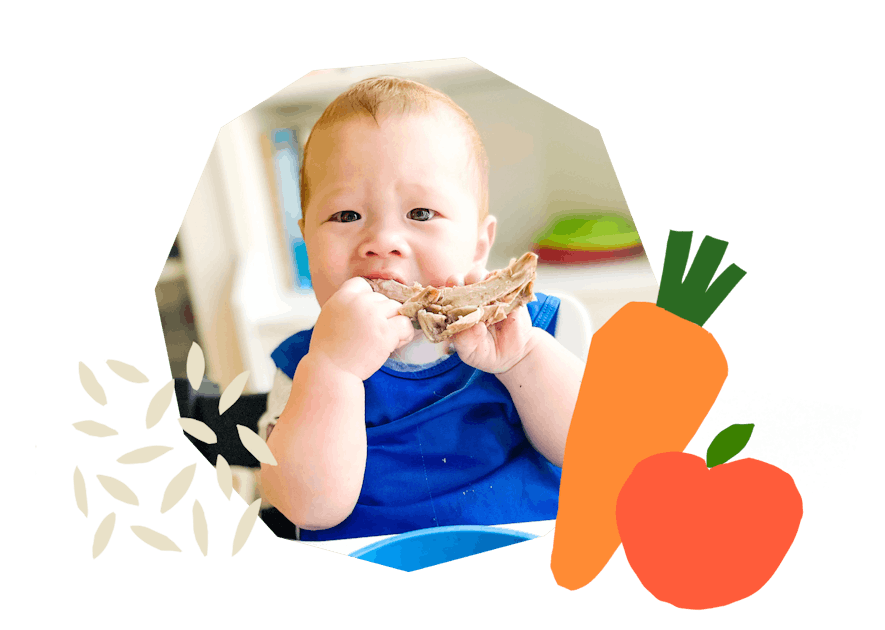
The Program Baby-Led Weaning with Katie Ferraro
A step-by-step digital program for starting solid foods safely and navigating the original 100 FIRST FOODS™ meal plan with baby-led weaning.
 EXPERT-LED, PROVEN APPROACH TO EATING REAL FOOD
EXPERT-LED, PROVEN APPROACH TO EATING REAL FOOD CONCISE VIDEO TRAININGS TO MASTER BABY-LED WEANING
CONCISE VIDEO TRAININGS TO MASTER BABY-LED WEANING 100 FIRST FOODS DAILY MEAL PLAN WITH FOOD PREP VIDEOS
100 FIRST FOODS DAILY MEAL PLAN WITH FOOD PREP VIDEOS
Baby-Led Weaning for Beginners Free Workshop
Is your baby ready to start solid foods, but you’re not sure where to start? Get ready to give your baby a solid foundation to a lifetime of loving real food…even if you’re feeling overwhelmed or confused about this next stage of infant feeding.
Get baby-led weaning recipes and tips delivered to your email inbox.

